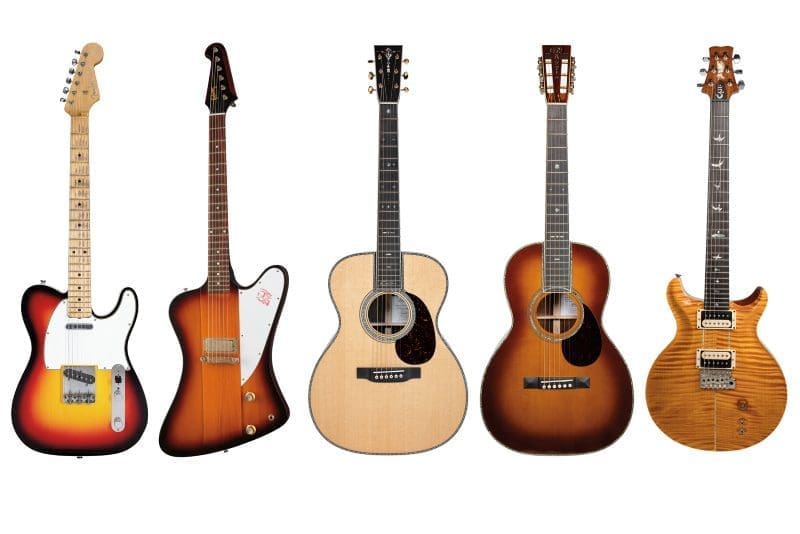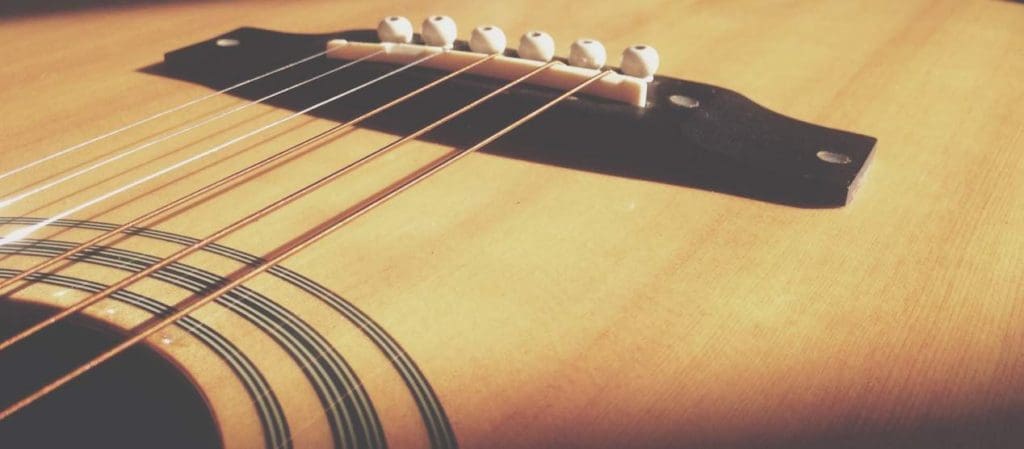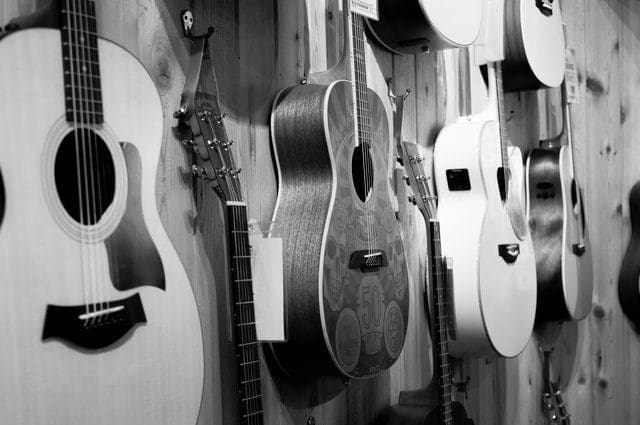Last update 14/12/2023
What is the best guitar for beginners? Do we have the answer? Of course, we do! But it may not be exactly what you think. If you expect us to say, “The best beginner’s guitar is model 1234 from Manufacturer X, ” you may be looking in the wrong direction.
You see, there IS no one best model…
While that may seem a bit confusing, it’s not. Let’s take a look – when we’re done, you’ll see that while it is simple to figure out, there are many things to consider when shopping for your first guitar.
Best Guitar for Beginners
Table of contents
Guitar types | Best Guitar for Beginners
There are three main types to compare: a steel-string acoustic, a nylon string (or ‘classical’) acoustic, or a full-blown electric.
Bass guitars
We should also mention the many bass guitars when talking about guitar types. However, the bass is quite a different beast, briefly mentioning it. There are electric and acoustic bass guitars available in various configurations. You can find all the information you need in our best beginner bass guitar guide, which will arm you with all the information to make an informed buying decision.
Steel-string acoustic guitar
Pros:
One price gets you the entire package – no need to buy a guitar amplifier. For someone starting on guitar, an acoustic guitar will serve you well.
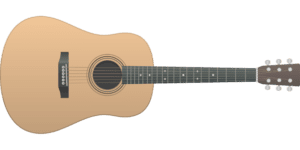

Depending on the model, the width of the neck may be a little larger at the nut than some other types. This extra space can make learning and playing your first chords much easier.
Cons:
Body proportions are typically more significant than a solid body electric guitar, making them possibly a bit more awkward to hold at first.
Solid-body electric guitar
Pros:
The body and overall proportions are typically smaller than most acoustics, making them more comfortable maneuvering and holding when playing.
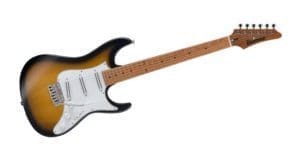

An electric guitar also has steel strings, which are thinner than a steel-string acoustic. Just as thicker strings need more tension to be tuned properly, the opposite is true – less is needed. And that means they can feel more comfortable under your fingers.
There’s just a bunch of cool stuff you can do on an electric that you can’t do easily on an acoustic. Sure, you can slide, bend notes, practice your vibrato, finger tap, etc., on the other guitar types – but you most likely won’t be able to do them all that well, especially as a beginner.
Cons:
Nylon string acoustic guitar (aka ‘classical guitars)
Pros:
Nylon strings take the least amount of tension to be tuned to pitch and are slightly thicker than steel strings. This leads to the most comfortable and less likely finger pain when first playing.
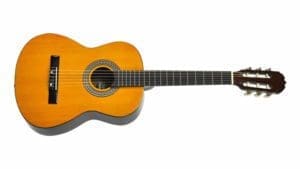

Overall proportions are maybe a little smaller than full-sized steel-string acoustics, making them a bit easier to manage. As with a steel-string acoustic, a separate guitar amplifier is unnecessary. Classical guitars are intended to, well, you guessed it, play classical music.
Cons:
Due to their particular designs, the fretboard has an almost flat radius. This can make full chords more challenging to play, as the fretboards on other guitar types are slightly curved to match the natural contours of your fretting hand.
Considering all the different types, we’d ultimately recommend a steel-string acoustic as the first type of guitar a beginner should start with. Why? Not having an amp is a big deal – you can let yourself be heard in just about any environment.
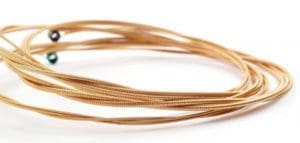

Best Guitar for Beginners – The ‘other’ big things to consider
OK – so we’ve gotten to the point where you know what type of guitar may be best for a beginner. But the decision doesn’t end there. From here, you need to check out different models, all while taking into account the three main points below:
How well it plays
Simply put – don’t buy a cheap piece of junk that isn’t set up as it should be. While most guitars – even at the lower end of the scale – have decent quality levels, some may be just awful. The string action (the strings’ height from the fretboard) may be way too high, making fretting notes and full chords almost impossible.
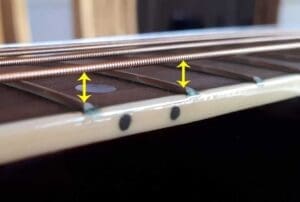

How well it sounds
No, you don’t need to go out and buy a top-of-the-line Martin that costs several thousand dollars and has the tone of a chorus of angels. What you do need is a guitar that sounds good.
Cheaper models cannot distinguish between all the frequencies an acoustic guitar produces. Some may have a too-boomy bass, and some may sound too harsh and brittle. The best choice is balanced to make a full, warm tone.
Just as you should not pick a guitar that’s hard to play, you shouldn’t get one that doesn’t sound good to your ears. It’s another big reason people become discouraged because even though they are playing the right things, it just sounds…like…crap…
How much does it cost?
The bottom line is that we all have a budget. It sure would be nice to have unlimited funds at our disposal, but that isn’t an option for most of us guitar players.
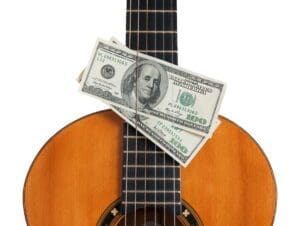

Learning to play the guitar can be one of the most rewarding things you can do but also one of the most challenging. And you know what that means? It means for every guitarist plugging away, building up their ability to play with every minute that they practice, there may be all the more that just lost interest and gave up.
That also means plenty of worthy guitars are tucked away in a corner or stored in a case under someone’s bed. Spending a lot of money on a guitar first makes little sense, especially if you don’t know that you’ll succeed. That’s not meant to sound discouraging – not at all – but possibly a little realistic.
How well it looks
OK – so there are four points instead of three. Consider it a bonus. But you must admit that a good-looking guitar is pretty killer and can inspire you to practice!
Conclusion
Right at the beginning is the most challenging time for someone new to the instrument. There can be so much that is overwhelming, and all it may take for someone to give up is picking the wrong guitar in the first place. If you are unsure about your choice, asking a salesperson you can trust or an experienced guitar teacher might be prudent.
Overall, we recommend starting with a decent quality steel-string acoustic that sounds good, plays right, and hits your price point—finding the best beginner’s guitar will take a little time and research.

